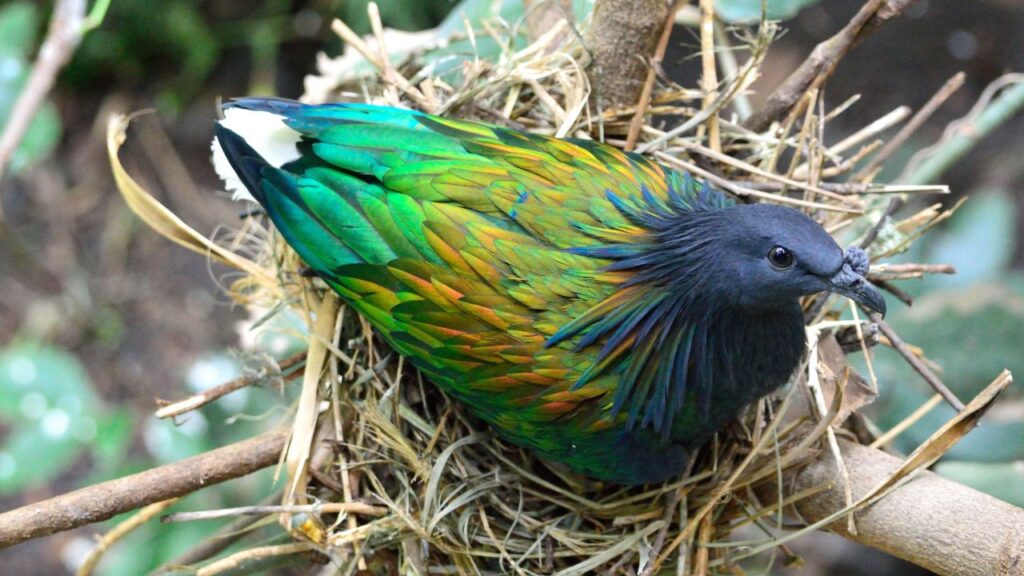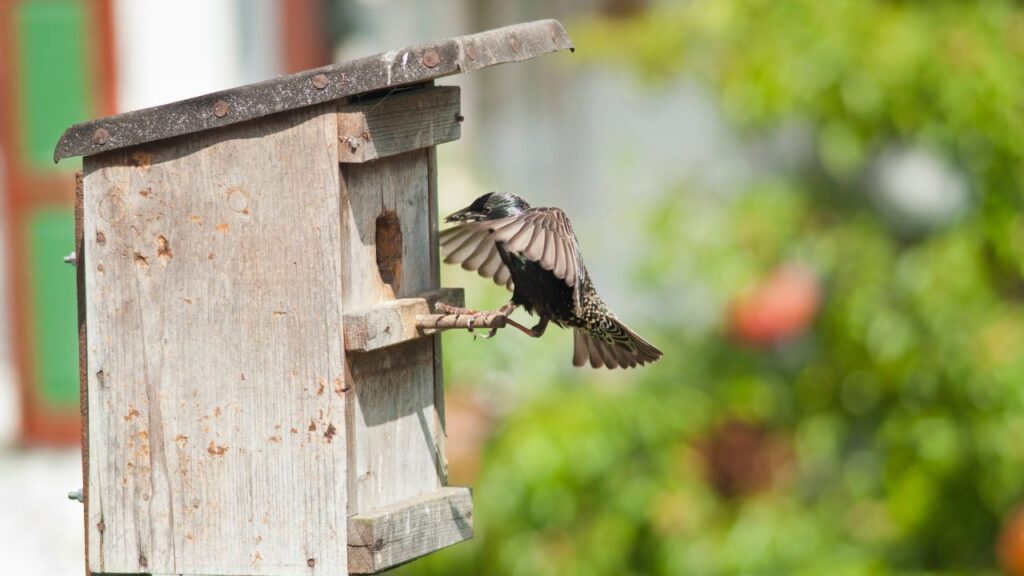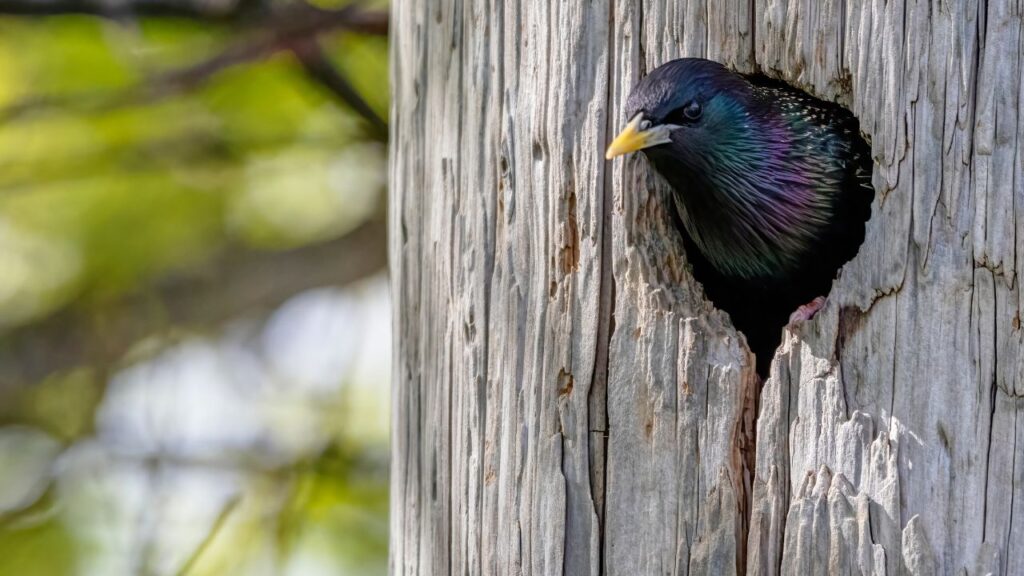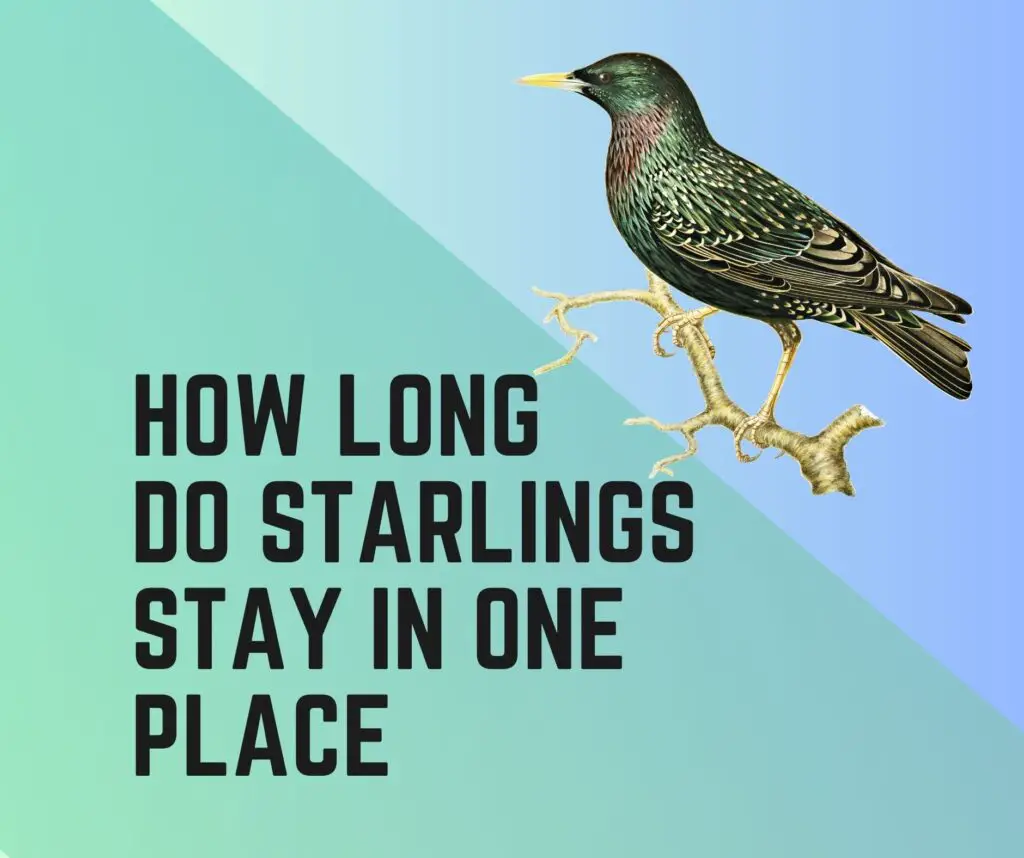Starlings, known for their fascinating behavior have brought the attention of bird enthusiasts and researchers alike. Loved for their mesmerizing aerial displays, Starlings are present in Europe, Africa, and Asia while are absent from large parts of America and Australia. Amongst a lot of questions/ queries resolving around Starlings, the most common one asks, “How Long Do Starlings Stay In One Place?”. Since Starlings are particle migrants, such inquiries about their habits and movements often occur.
Join us in this article as we reveal the patterns of starlings’ residency and their migratory patterns. Let’s gain a deeper appreciation for these beautiful birds’ complex and dynamic lives. And by the end of this article, you will surely feel like going out and observing some.
So, let’s get started:
Where do Starlings Nest?
Starlings are beautiful small to medium-sized passerine birds. These birds belong to the family Sturnidae, named for the genus Sturnus. Starlings are known for their adaptability and opportunistic nature and exhibit diverse nesting habits. These tiny but extremely social birds nest at different locations, depending upon their interest and the availability of suitable sites.
Some common places where Starling nest includes:
- Tree Cavities: The most common and natural places for Starlings to nest are cavities of trees. Starlings choose tree cavities created by other birds, especially woodpeckers, and then line them with grass, twigs, feathers, and other materials.
- Buildings and Structures: Another common area where Starlings often nest are urban and suburban buildings. These places mimic the natural tree cavities, and thus, Starlings often choose them. Buildings and structures provide an abundance of nesting opportunities, and starlings use roof eaves, chimneys, and ventilation systems for nesting.
- Agricultural Areas: While Buildings and Structures are common nesting places in urban and suburban areas, in rural landscapes, starlings may nest in agricultural structures. Starlings choose to nest in barns, sheds, and outbuildings since they provide ample food sources and shelter.
- Nest Boxes: Starlings readily adapt to using artificial nest boxes. These specially designed structures mimic the size and shape of natural tree cavities and provide an alternative nesting option in areas where suitable trees may be scarce.
- Birdhouses: Although Starlings aren’t “Cavity nesters” traditionally, they may sometimes take advantage of suitable nesting sites and birdhouses intended for other species.
DID YOU KNOW? Starlings are Invasive species in many regions, and their nesting habits can cause damage to the building or may result in competing with native bird species for nesting.

For how long do Starlings Stay/ Nest in one place?
Depending upon different factors, starlings stay/ nest in one place for a few weeks or a couple of months. Factors like suitability of nesting sites, presence of predators, food available, etc typically influence the during of their nesting.
From springs to early summers, the typical Starling breeding season, starlings construct nests and raise their young. It is when Starlings care for their eggs and hatchling, and the period lasts for around 3 to 4 weeks. As soon as the young starlings fledge and become independent, the adults Starling abandon the nest and move to a different location. This kind of behavior allows Starlings to explore a wider range of foraging opportunities. It also helps them to maximize their chances of survival.
Some Starlings return to their usual nesting site in subsequent years. However, others may choose new sites every breeding season/ year. This flexibility in nesting behavior has helped these tiny birds in adapting to different changing environmental conditions and resource availability. Starlings are known to form large flocks outside of the breeding season since they are highly gregarious birds. Their flocks can have hundreds or even thousands of Starling making movement for food and suitable roosting sites.

Starlings and their Migratory Pattern
Starlings have both resident and migratory populations and thus display an intriguing migratory pattern. In many regions they stay in the same area year around since they are non-migratory. The non-migratory Starling population is often common in areas with mild climates and abundant food resources.
Whereas some starlings are migratory, especially the ones that reside in harsh winter regions where food availability is limited. Due to the extreme weather conditions and food scarcity, they turn into migratory populations and thus choose seasonal movements to find more favorable conditions. The Migratory Starling population can travel significant distances to find areas with milder temperatures and an abundance of food.
The migratory destination and route of Starlings can differentiate depending on their breeding location. Typically, Starlings from northern latitudes migrate southward. In contrast, Starlings who are in temperate regions may migrate only shorter distances or prefer attitudinal migrations.
Not only that, but some Starling populations may even exhibit partial migration behavior. It means only a portion of the population undertaking migratory journeys, whereas most of them become/ remain residents. Factors like availability of food, genetic predispositions, and photo-period (day length) influence the migratory pattern/ behavior of these birds.

Do Starlings Nest in the same place every year?
Starlings may nest in the same place every year, but it is not necessarily applicable to everyone. Some Starlings return to their old nesting site, whereas others choose to explore new locations and may exhibit a more opportunistic nesting behavior. Starlings typically explore new locations each breeding season depending on food availability, competition for nesting sites, and environmental conditions.
The flexibility in nesting behavior allows Starlings to adapt to changing circumstances and maximize their reproductive success every year.
What time of day is Starlings most active?
Since Starlings are diurnal, they remain most active during the day. Starlings exhibit peak activity during specific periods, especially in the early morning and late afternoon. Or, Starlings tend to stay active during the hours around sunrise and sunset. It is the time when these tiny birds engage in foraging, feeding on insects, fruits, seeds, and other food sources.
How long do starlings stay in their breeding versus their wintering grounds?
Starlings remain for a lesser time on their breeding ground when compared to their wintering grounds. They occupy breeding grounds only for a few weeks or a couple of months during the nesting season. In contrast, Starlings spend several months in their wintering grounds, which allows them to enjoy the advantage of favorable wintering habitats, food sources, and milder climates before they visit their breeding ground again in the spring season.
Starlings and Urbanization
Urbanization has had a significant impact on starlings’ behavior and habitat selection. Here’s a closer look at the same:
- Urbanization offers a wide array of nesting opportunities to Starlings due to the increased availability of nesting sites. In urban locations, Starling’s structures, such as buildings, bridges, and nest boxes nest. The abundance of suitable nesting sites in urban areas has positively influenced their nesting behavior.
- Due to more consistent and abundant food sources, urban environments have extended Starlings’ breeding season. It even allows Starlings to raise multiple broods within a single year.
- After finding an abundance of suitable nesting sites in urban areas, Starling has adapted to urban noises as well. The constant noise generated by traffic, construction, and human activities can be challenging for these birds, but they have seemed to adjust their vocalizations and communication strategies.
- Starlings form murmuration, large roosting aggregations in city parks, rooftops, and trees. Such roosts offer them safety from predators and also add the needed warmth of urban heat islands. This makes starlings stay longer in urban areas during certain times of the year.
- After spending so much time amidst urbanization, Starlings now feed on agricultural crops, including fruit orchards and grain fields. They, however, damage crops and lead to conflicts with farmers.
However, no matter how long Starlings have adapted to urban environments, they still prefer rural settlements. Given there are suitable foraging opportunities and food sources, Starlings choose to nest and breed in rural settings.
Summary
Overall, the duration for which Starlings stay in one place can vary depending on food sources, nesting opportunities, weather conditions, and social dynamics within their flocks. These birds, with migratory and sedentary tendencies, will either stay in one place for the entire year or migrate once their breeding season comes to an end.

Hi, There and Welcome to BirdsNews.com, is here to help you learn and care about pet birds. and this blog is a journal of everything I’ve learned.

